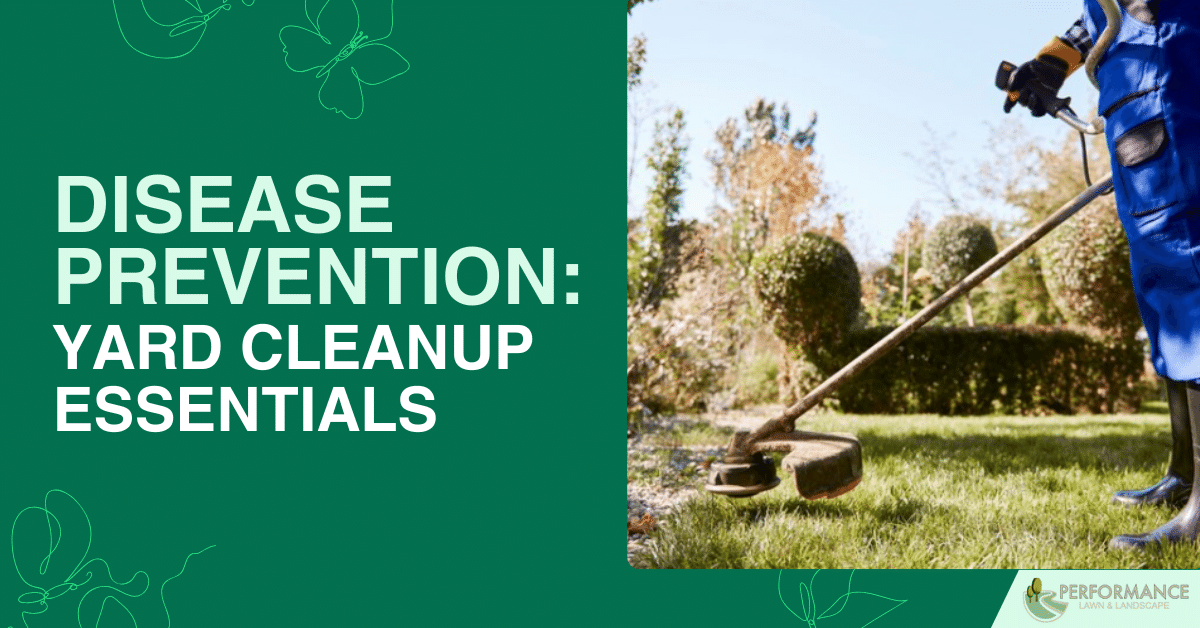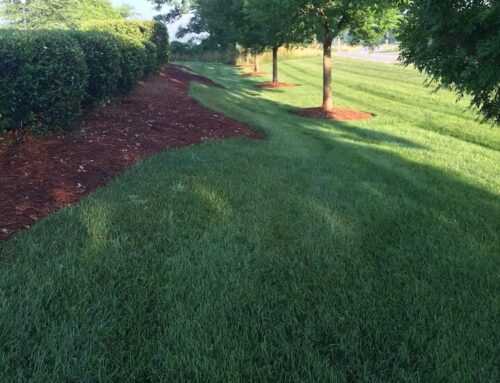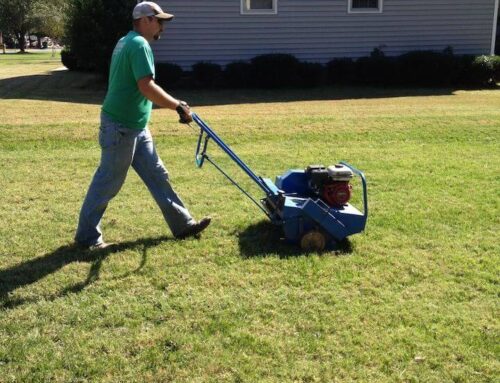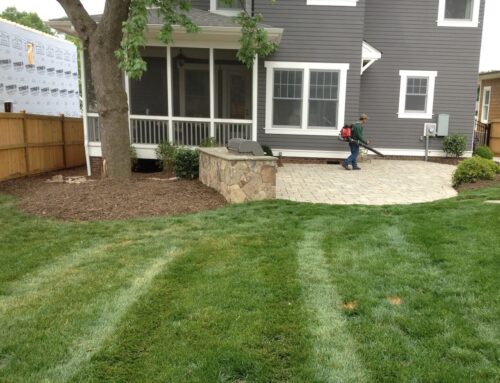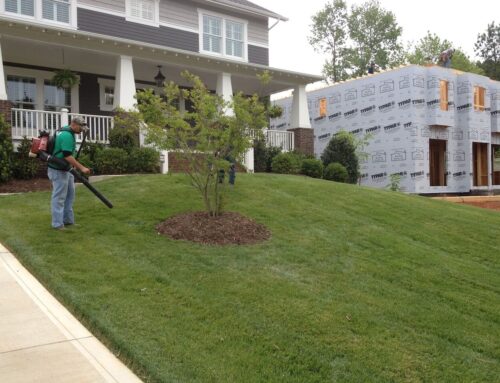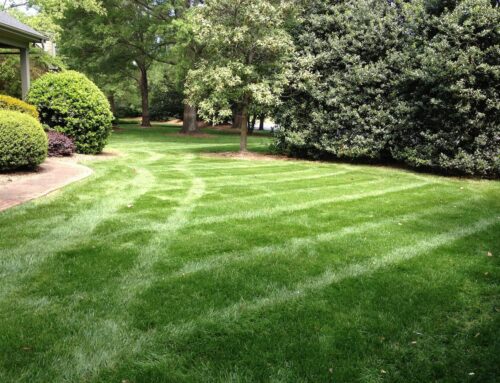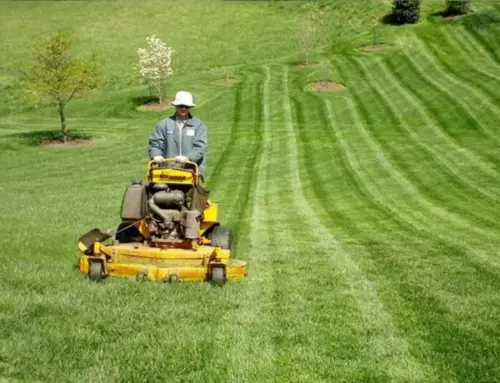As the weather warms up and spring approaches, many of us are eagerly anticipating spending more time outdoors. However, with the start of a new season comes the need for some essential yard maintenance to prevent the spread of diseases.
Whether you’re an avid gardener or simply enjoy spending time in your backyard, it’s important to take precautionary measures against potential health risks lurking in your outdoor space.
What are the essential yard cleanup practices that contribute to disease prevention in landscaping?
Proper yard cleanup practices play a crucial role in disease prevention within landscaping. Removing fallen leaves, branches, and other debris helps eliminate pest and pathogen breeding sites. These organic materials can harbor harmful fungi and bacteria, infecting your plants.
Regular pruning of diseased or dead branches is also essential, as it not only improves the overall health of your landscaping but stops plant-to-plant disease transmission.
Additionally, effective weed control is vital. Weeds and attractive plants compete for nutrients and water, weakening them and making them more susceptible to diseases. Proper watering practices, such as keeping foliage dry with soaker hoses or drip irrigation minimize the spread of moisture-borne diseases.
Lastly, maintaining well-aerated soil through practices like mulching and proper spacing of plants promotes root health and reduces the risk of soil-borne diseases. Adhering to these yard cleanup practices can create a healthier, disease-resistant landscaping environment that thrives for years.
How can homeowners incorporate disease prevention strategies into their routine yard cleanup efforts?
Homeowners can seamlessly incorporate disease prevention strategies into their routine yard cleanup efforts by following key practices. Firstly, make it a habit to regularly remove fallen leaves, branches, and debris from the yard, as pests can breed there and pathogens. Ensure proper disposal of this organic material to prevent disease transmission. Secondly, practice timely pruning by removing diseased or dead branches to prevent plant disease.
Weed control is also crucial, so regularly remove weeds that compete with targeted plants for resources. Implement proper watering techniques, like using soaker hoses or drip irrigation, to keep foliage dry, reducing the risk of moisture-borne diseases.
Lastly, maintain well-aerated soil by mulching and appropriately spacing your plants to promote root health and reduce soil-borne diseases.
By incorporating these disease prevention strategies into their routine yard cleanup efforts, homeowners can create a healthier, more disease-resistant landscaping environment for their outdoor spaces to thrive over time.
What measures should be taken to proactively prevent pests and diseases from affecting plants in the yard?
Proactively preventing pests and diseases in your yard is essential to maintaining healthy plants. Here are several measures to consider:
- Plant Selection: Start with disease-resistant plant varieties suited to your local climate and soil conditions. Choose native plants when possible, as they tend to be more adapted and resilient.
- Proper Plant Spacing: Avoid overcrowding plants as it can create conditions favorable for disease spread. Adequate spacing improves airflow and decreases risk pathogens thriving.
- Healthy Soil: Maintain well-balanced, fertile soil through regular soil testing and appropriate amendments. Healthy soil promotes robust plant growth and helps plants resist diseases.
- Water Management: Water plants at their base early in the day to dry foliage before night to reduce fungal problems. Use mulch to retain soil moisture and regulate temperature.
- Pruning and Deadheading: Regularly remove dead or diseased plant components to prevent disease transmission. Prune properly to encourage good air circulation and plant structure.
- Sanitation: Clean garden tools and equipment to prevent the transmission of diseases between plants. Dispose of diseased plant material properly, rather than composting it.
- Natural Predators: Attract beneficial insects, birds, and other wildlife to your yard to help control pest populations naturally. Plant flowers and shrubs that provide nectar and shelter for these valuable creatures.
- Integrated Pest Management (IPM): Implement IPM strategies, which involve monitoring for pests and using the least toxic methods for control, such as biological controls, traps, and organic pesticides as a last resort.
- Regular Inspection: Check your plants regularly for pests or diseases. Early detection allows for prompt action and minimizes damage.
- Education: Stay informed about common pests and diseases in your area and learn about their life cycles and prevention strategies. Local gardening clubs, extension offices, and online resources can be valuable sources of information.
By proactively implementing these measures, homeowners can significantly lower pest and disease risk yard’s plants, promoting a thriving and resilient landscape.
Are there specific yard cleanup techniques that can effectively prevent the spread of plant diseases among various plant species?
Yes, specific yard cleanup techniques can effectively prevent the spread of plant diseases among various plant species.
- Regularly clean and disinfect garden tools between different species to stop pathogens hitching a ride.
- Chop and bin any dead or sickly growth pronto before contaminating the neighbors.
- Give plants some breathing space for good airflow circulation to reduce fugly humidity hangouts.
- Pull problematic weeds and toss potentially pestilent plants before icky ick spreads.
- Tidy up fallen foliage, debris and plant leftovers taking out trashy hiding spots for germy organisms.
These yard cleanup techniques help create a disease-resistant environment, safeguarding the health of various plant species in your yard.
What are the underlying causes and factors responsible for the development of lawn disease, and how can they be addressed as part of yard cleanup essentials?
Lawn diseases can develop due to a combination of underlying causes and factors. Addressing these issues as part of yard cleanup essentials is essential for disease prevention.
- Fungal Pathogens: Fungal diseases often result from excessive moisture and poor air circulation. To address this, avoid overwatering your lawn, especially in the evening, as it lets the grass stay wet overnight. Proper watering practices, such as deep but infrequent morning watering, can help. Improve air circulation by regularly dethatching and aerating the lawn.
- Compacted Soil: Compacted soil restricts root growth and can lead to disease susceptibility. Yard cleanup should include core aeration to alleviate soil compaction and enhance root development.
- Inadequate Lawn Care: Neglecting regular lawn care practices like mowing too short or infrequently and failing to fertilize properly can weaken the grass and make it more susceptible to diseases. Maintain a consistent mowing schedule, avoid removing over one-third of the grass height per mow, and follow a proper fertilization routine based on your grass type and local conditions.
- Planting the Wrong Grass Variety: Choosing a grass variety not well-suited to your region’s climate and soil can increase disease risk. Select grass types adapted to your local conditions for a healthier lawn.
- Poor Drainage: Improper yard grading and drainage issues can lead to water pooling, which promotes disease development. Correct drainage problems, redirect downspouts, and ensure water flows away from your lawn.
- Infected Debris: Yard cleanup should involve removing leaves, grass clippings, and other debris that may carry fungal spores or pathogens. Dispose of this material properly, do not compost infected debris, and clean up pet waste, which can contribute to disease development.
By addressing these underlying causes and factors through proper yard cleanup and maintenance, homeowners can significantly reduce the risk of lawn diseases and promote a healthy, disease-resistant lawn.
Maintain a Clean Yard for a Healthy Environment
At Performance Lawn and Landscapes, we prioritize maintaining a clean yard to foster a healthy environment. Our dedicated team understands that a clean yard enhances the visual appeal and promotes overall well-being.
We offer comprehensive yard cleanup services that include debris removal, leaf clearing, and proper disposal to prevent disease spread.
By keeping your outdoor space immaculate, we ensure that your plants thrive, pests are deterred, and your environment remains vibrant and disease-resistant. Trust us to create a pristine landscape that reflects the commitment to aesthetics and your outdoor ecosystem’s health.

